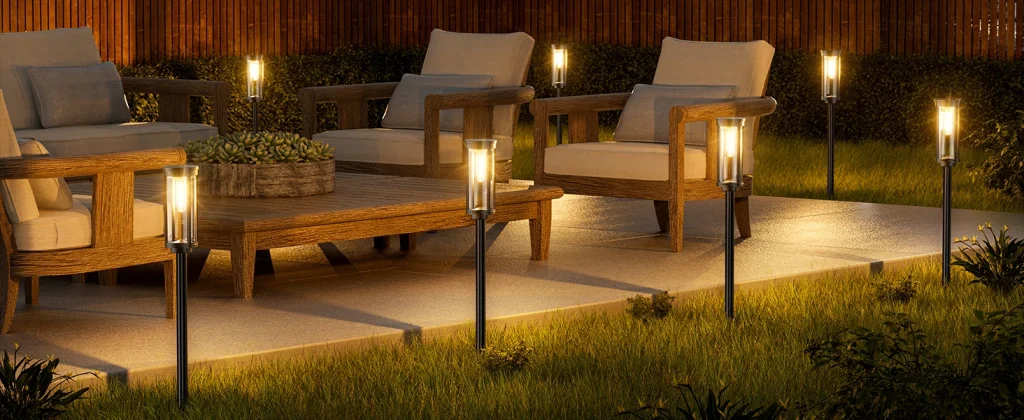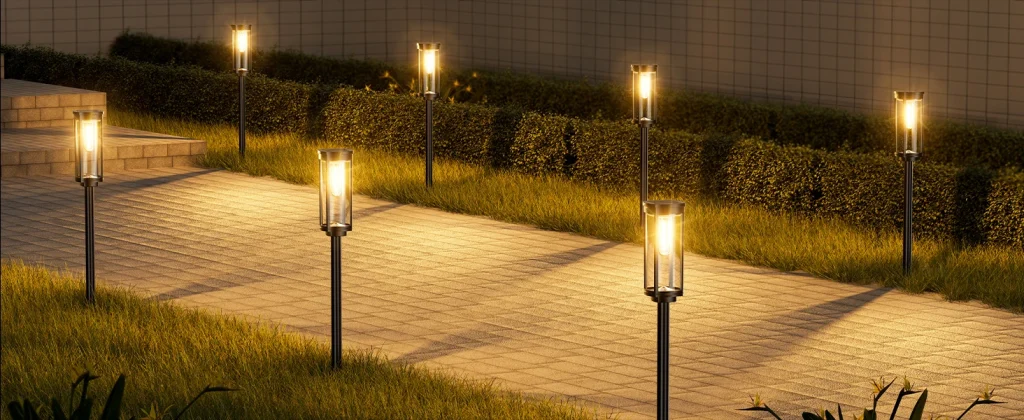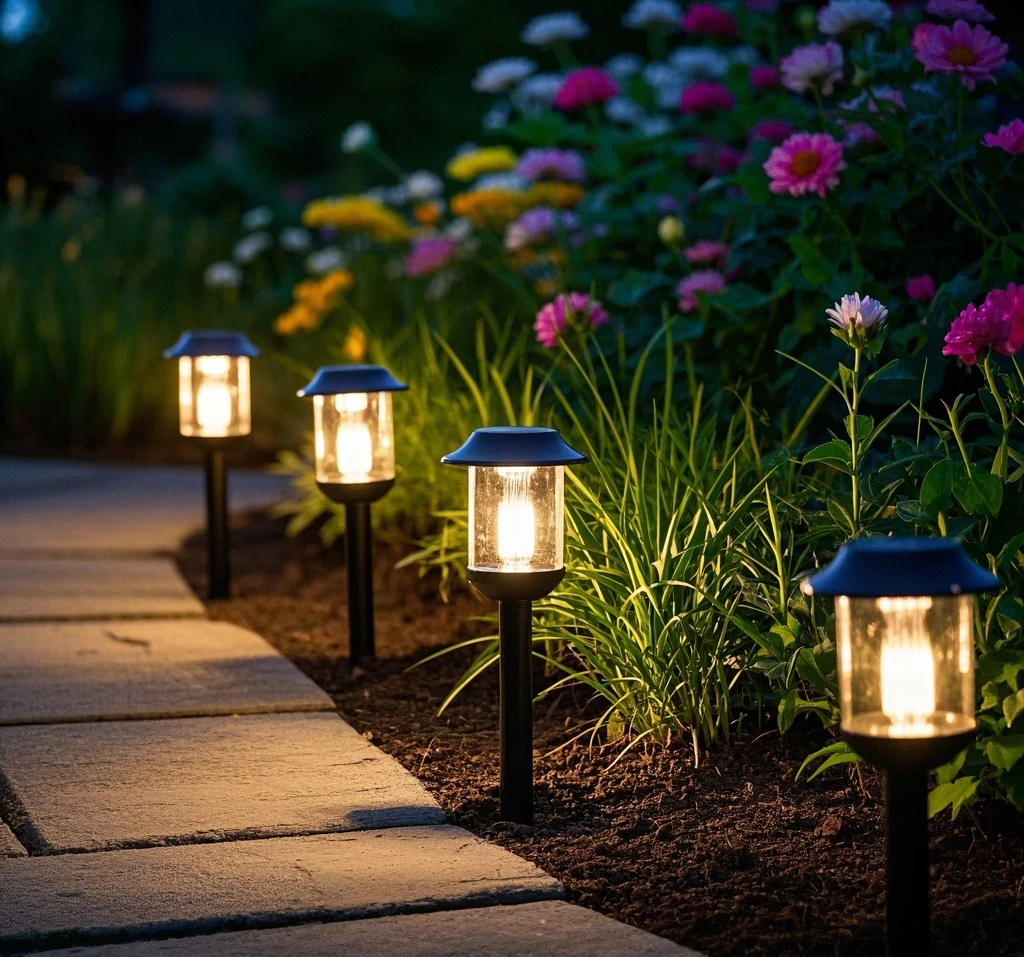Solar walkway lights provide an eco-friendly solution for illuminating paths, gardens, and outdoor spaces. Powered by sunlight, these fixtures rely on solar panels, batteries, and LED bulbs to function. Durability and lifespan remain critical concerns for users evaluating their long-term value. This article explores the longevity of solar walkway lights, focusing on component lifespans, environmental factors, and maintenance impacts. Insights from U.S. authoritative reports ground the analysis in reliable data.

Lifespan of Key Components
Solar walkway lights consist of three primary components: the solar panel, the battery, and the LED bulb. Each part contributes to overall durability. Lifespan varies based on quality, usage, and external conditions.
Solar Panels
Solar panels convert sunlight into electricity. Most walkway lights use polycrystalline or monocrystalline silicon panels. The U.S. Department of Energy (DOE) reports that high-quality solar panels maintain efficiency for 20 to 25 years in residential applications. Degradation occurs at a rate of 0.5% to 1% per year, according to the National Renewable Energy Laboratory (NREL). In solar walkway lights, smaller panels experience similar longevity. Manufacturers often rate panels for 10 to 15 years under typical outdoor exposure. Harsh weather accelerates wear, reducing this timeline in some cases.
Batteries
Batteries store energy for nighttime use. Common types include nickel-metal hydride (NiMH) and lithium-ion (Li-ion). NiMH batteries last 2 to 5 years, or 500 to 1000 charge cycles, per DOE solid-state lighting studies. Li-ion batteries extend this range to 5 to 7 years, offering 1000 to 2000 cycles. NREL data highlights that battery lifespan depends on charge-discharge patterns. Overcharging or deep discharging shortens durability. Replaceable batteries allow users to extend the light’s operational life beyond initial limits.
LED Bulbs
LEDs provide illumination in solar walkway lights. The DOE’s “Lighting Facts” program indicates that LEDs achieve 25,000 to 50,000 hours of operation. At 8 hours per night, this equates to 8 to 17 years. Consumer Reports’ 2012 analysis of LED durability confirms that quality LEDs maintain brightness over 20,000 hours with minimal lumen depreciation. Low-wattage LEDs in walkway lights often exceed this threshold. Replacement proves rare, as LEDs typically outlast other components.
Factors Affecting Longevity
External conditions and design choices influence how long solar walkway lights endure. Component quality, weather exposure, and installation practices play significant roles.
Component Quality
High-grade materials extend lifespan. Premium solar panels resist UV damage and corrosion. NREL research notes that budget models with thin plastic casings degrade within 5 years. Energy Star-certified lights, adhering to DOE efficiency standards, use durable enclosures and efficient LEDs. Consumer Reports found that top-tier brands outlast generic counterparts by 3 to 5 years. Investment in quality correlates with prolonged performance.
Weather Exposure
Outdoor environments challenge durability. Rain, snow, and extreme temperatures affect components differently. NREL studies show that solar panels withstand moisture with proper sealing, though prolonged submersion causes failure. Batteries lose capacity in cold climates, dropping 20% efficiency below 32°F, per DOE findings. Heat above 90°F accelerates chemical degradation in NiMH and Li-ion cells. Coastal salt air corrodes metal parts, reducing lifespan by 1 to 2 years in affected regions.
Installation and Placement
Placement impacts energy collection and wear. Lights in shaded areas receive less sunlight, straining batteries through incomplete charging. The IES recommends positioning solar panels southward at a 30-degree tilt for optimal exposure in the U.S. Ground-level fixtures face dirt accumulation, dimming output over time. Elevated or angled designs mitigate debris buildup. Improper staking leads to physical damage from lawn equipment or foot traffic.
Maintenance and Its Role
Routine care influences longevity. Cleaning, battery management, and timely repairs extend operational life.
Cleaning Solar Panels
Dust and grime reduce panel efficiency. NREL tests demonstrate that dirty panels lose 5% to 10% output annually if neglected. Wiping panels with a damp cloth every 6 months maintains performance. Harsh chemicals damage protective coatings, shortening lifespan. Regular cleaning proves essential in dusty or pollen-heavy regions.
Battery Replacement
Batteries degrade faster than other components. DOE guidelines suggest replacing NiMH batteries every 3 years, Li-ion every 5 to 7 years. User-replaceable designs allow lights to function beyond initial battery life. Storing spares in cool, dry conditions preserves capacity. Ignoring replacement dims lights prematurely.
Repair and Upkeep
Physical damage affects durability. Cracked panels or loose wiring fail under stress. Consumer Reports advises inspecting lights annually for wear. Tightening stakes and sealing leaks prevent water ingress. Spare parts availability varies by brand, impacting repair feasibility.
Real-World Lifespan Estimates
Combining component lifespans and external factors yields practical estimates. Entry-level solar walkway lights last 2 to 5 years. Mid-range models, with better batteries and LEDs, endure 5 to 10 years. Premium Energy Star-certified units reach 10 to 15 years. The DOE’s solar lighting assessments align with these ranges, noting that quality and care dictate outcomes.
Consumer Reports’ field tests of solar fixtures reinforce this timeline. Budget lights failed after 3 years in humid climates. Mid-tier options maintained brightness for 7 years with minimal upkeep. High-end models exceeded 12 years in moderate conditions. NREL’s durability studies on small-scale solar systems corroborate that 10 years marks a realistic average for well-maintained lights.

Insights from U.S. Authoritative Reports
The DOE’s “Energy Star” program sets benchmarks for solar lighting. Certified walkway lights average 8 to 12 years of service life, factoring in LED and battery performance. Efficiency standards prioritize durable components, reducing replacement frequency.
NREL’s solar reliability research provides technical depth. Panels and LEDs outlast batteries in most setups, with weather as the primary limiter. Data from U.S. test sites shows a 10% failure rate after 5 years for mid-grade systems, dropping to 5% with premium builds.
Consumer Reports’ 2012 LED analysis remains relevant. Durability tests on solar-powered LEDs projected 10 to 15 years for quality units. Field observations in 2020 updates confirmed these projections, emphasizing maintenance as a longevity factor.
The IES offers installation guidance affecting lifespan. Proper siting and spacing enhance energy capture, reducing strain on batteries. Standards for outdoor lighting durability align with a 10-year minimum for reliable products.
Regional Variations in Lifespan
Climate shapes longevity across the U.S. Southern states like Texas, with 5 to 6 kWh/m²/day of sunlight, support consistent charging. NREL maps indicate northern regions, averaging 3 to 4 kWh/m²/day, face shorter battery life due to reduced solar input. Coastal humidity in Florida accelerates corrosion, trimming 1 to 2 years off estimates. Arid zones like Arizona preserve components longer, pushing lifespans toward 15 years.
Extending the Life of Solar Walkway Lights
Users control longevity through proactive steps. Selecting lights with replaceable batteries ensures functionality past 5 years. Positioning panels for maximum sunlight avoids energy deficits. Cleaning and inspecting units annually mitigates wear. Choosing Energy Star-rated products guarantees durability standards.
How Long Solar Walkway Lights Last
Solar walkway lights last 2 to 15 years, depending on quality, environment, and care. Batteries limit lifespan at 2 to 7 years, while LEDs and panels endure 10 to 25 years. Mid-range estimates of 5 to 10 years reflect typical use. U.S. reports from DOE, NREL, Consumer Reports, and IES confirm that durable design and maintenance dictate real-world outcomes. Understanding component lifespans and external factors guides expectations for these sustainable lighting solutions.


Leave a Reply